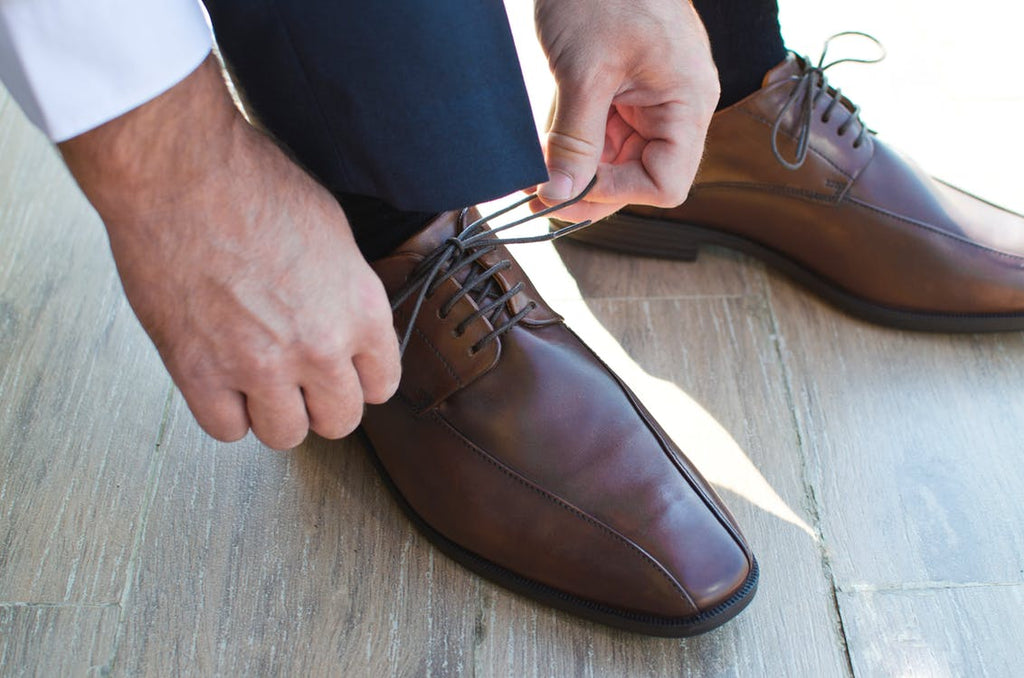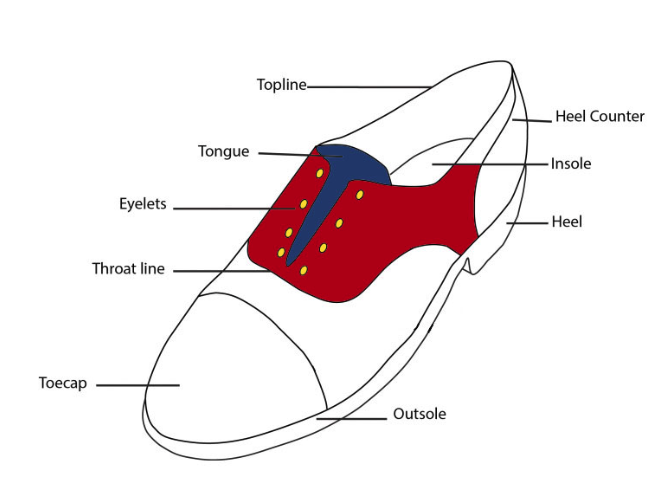Free delivery on orders over £50, only £4.95 under £50
Free delivery on orders over £50, only £4.95 under £50
Welcome to our blog, your one-stop resource for news, features and resources for living life to the fullest. View our articles on the latest mobility products and features with disability bloggers.
Posted by Mike Phipps on June 19, 2018

This article was updated on 22/04/2024.
When it comes to shoes, many of us struggle to find the perfect pair. Whether you’re looking for something to aid an issue, or just searching for the perfect fit, this handy guide will help you understand the different aspects of choosing the right shoe.
Finding a pair of shoes that are not only comfortable but stylish as well, can feel like an impossible task, especially for those who have arthritis, plantar fasciitis or other issues with their feet and ankles, like swelling.
Often, the shoes we like the look of aren’t very comfortable, while the most comfortable shoes aren’t very stylish, but this can be easily overcome.
By being aware of a few simple facts about shoe construction and design, and taking note of the tips in this guide, you can drastically improve the way you shop for and wear shoes, transforming your tired toes into happy feet!
For the material of your shoes, a natural fabric is best, as it allows your feet to breathe and be kept clean and hygienic.
Leather is a good choice, especially for hard-wearing, durable shoes, due to its sturdiness and how easily it can soften to mould to your feet.
As well as the upper (the part of the shoe that is visible on the outside), the lining of your shoes should also be breathable. This part of the shoe has direct contact with your feet, so it should be soft and seamfree to protect you from blisters.
Top Tip: A lightweight material is best for the lining of your shoes because it helps to prevent unpleasant odours and foot bacteria.
The different parts of the shoe are also important to consider when you are choosing your perfect pair. Every shoe is different, from heel height and width to the shape of the toe, to the thickness and grip of the sole, and the type of insole.
A suitably shaped heel counter cut-out is crucial. This is simply the shape of the topline of the shoe (the edge); if shaped correctly, it can offer a comfortable fit and prevent the edge of the shoe digging into the heel and ankle when walking. Look for a shoe with a rounded topline, as these are less likely to cut into your foot.
Top Tip: Many shoes can dig uncomfortably into the ankle, so it is important to find a pair that has padded collars and adequate ankle support. This will offer a snug and comfy fit to prevent the edge of the shoe from cutting into your feet, which is especially important if you have swollen feet.

For stability and sturdiness, pick a heel that is no higher than 4 cm, as high heels can aggravate the tendons in your legs and increase pressure on the forepart of your foot.
Top Tip: If you must wear heels, try to wear them for a maximum of three hours to avoid aches and pains, or even permanent damage.
A good heel counter is essential to stop the heel from slipping when walking; this can cause blisters and make the shoes painful to wear. This also stops your feet from moving around inside the shoes and ensures a snug fit to offer support to the ankle.
The type of fastenings and adjustment are highly important when looking for shoes; styles with laces, straps or bars are perfect, as they allow you to choose how you want the shoe to fit. Slip-on shoes are not a great option, as they don’t allow for any adjustment to secure the shoe.
Top Tip: Having your shoes tied too tightly can cause excessive pressure on the foot, whilst having them too loose can cause blisters and other similar sores.

The tongue of the shoe should be padded to give maximum cushioning to your instep. In addition to this, an ideal tongue should allow the shoe to be fastened securely, which ensures a comfortable fit.
Top Tip: Look for shoes with soft tongues and you’ll know that you’ll be able to avoid any painful steps.
Deep toe boxes (toe caps) are ideal, as they prevent rubbing and allow toes to move freely inside the shoe. You want to avoid a narrow toe shape, as this will squash the toes and could lead to blisters or other sore spots.
A shoe with a roomy interior also allows your feet to breathe easier, thus providing good ventilation and reducing the risk of odour or bacteria.
A perfect sole can be hard to find in a pair of shoes, but there a couple of things that should be top of your list:
Many orthopaedic shoes will have good, comfortable insoles already fitted. However, these are often removable, which means you’ll be able to insert specialist insoles that could be better for your feet.
Specialist insoles come in a variety of different materials and thicknesses which offer the user different levels of comfort and support.
Removable insoles can also be used to help adjust the size of a shoe to fit — so even if you have slightly different sized feet, or just need a bit of support in a specific area, such as the heel, specialist insoles can help to provide precise adjustment to your shoes,
Top Tip: Many removable insoles are washable, which means you can keep your perfect shoes clean and smelling fresh!
At Ability Superstore, we have a great selection of foot care products and specialist insoles to help you take good care of your feet!

Kate Makin qualified as an occupational therapist (OT) in 2001 with a BSc (Hons) in Occupational Therapy. She is a member of the Royal College of Occupational Therapists (RCOT).
As a registered occupational therapist (OT), Kate is a science degree-based, health and social care professional, taking a “whole person” approach to both physical and mental health and wellbeing. This enables individuals, of all ages, to achieve their full potential and lead as independent life as possible.
Click here for Kate’s registration with the Health and Care Professions Council.
Throughout her career, Kate has worked in many different clinical settings, in both the public and private sector. Kate has been running her own independent occupational therapist business since 2009. She is passionate about disability aids and adaptations, with a specialist interest in postural management and seating.
As Ability Superstore’s resident OT, Kate is on hand to offer professional advice and answer any queries.